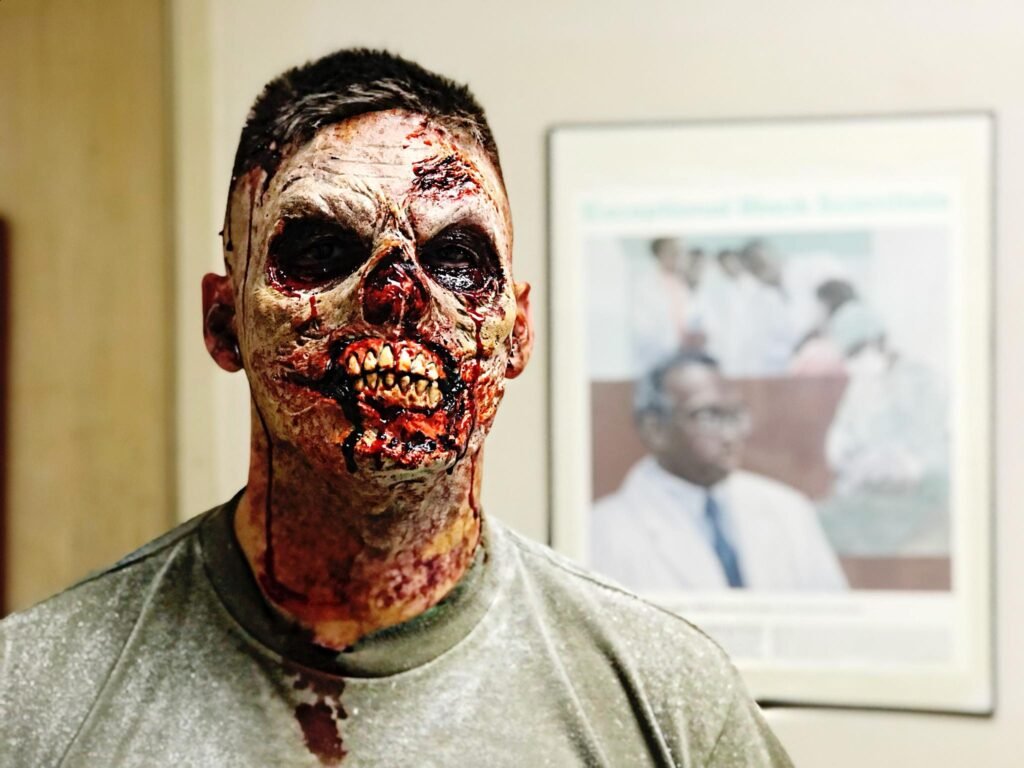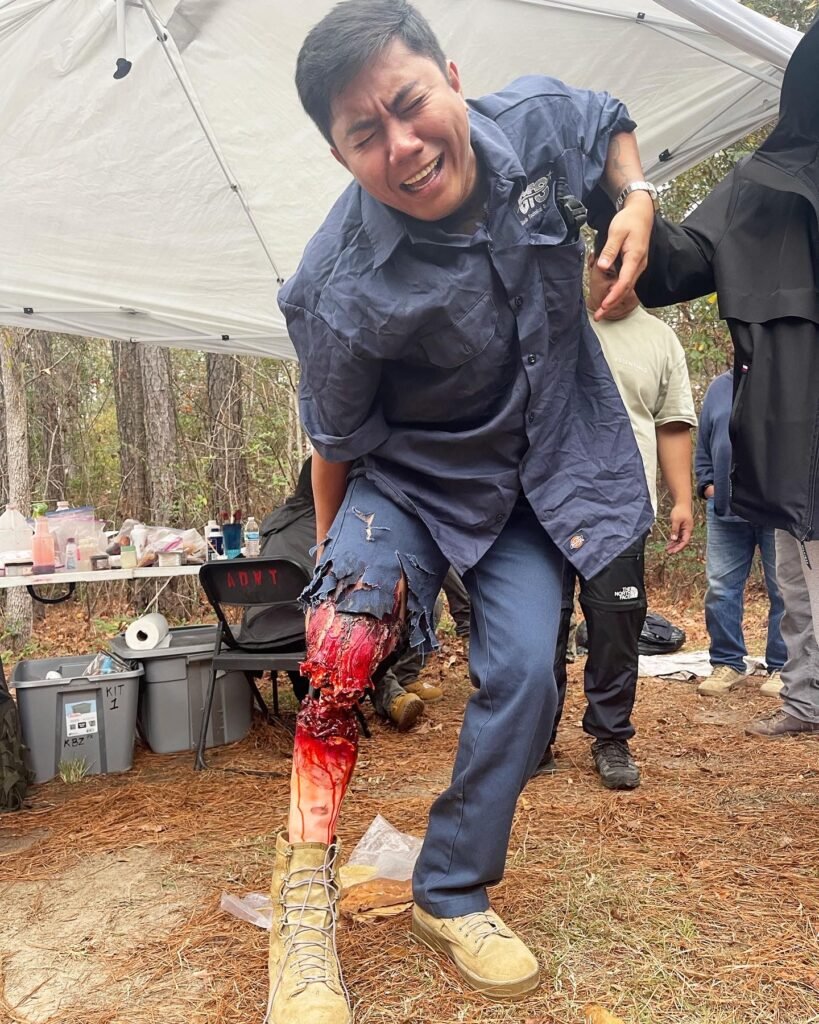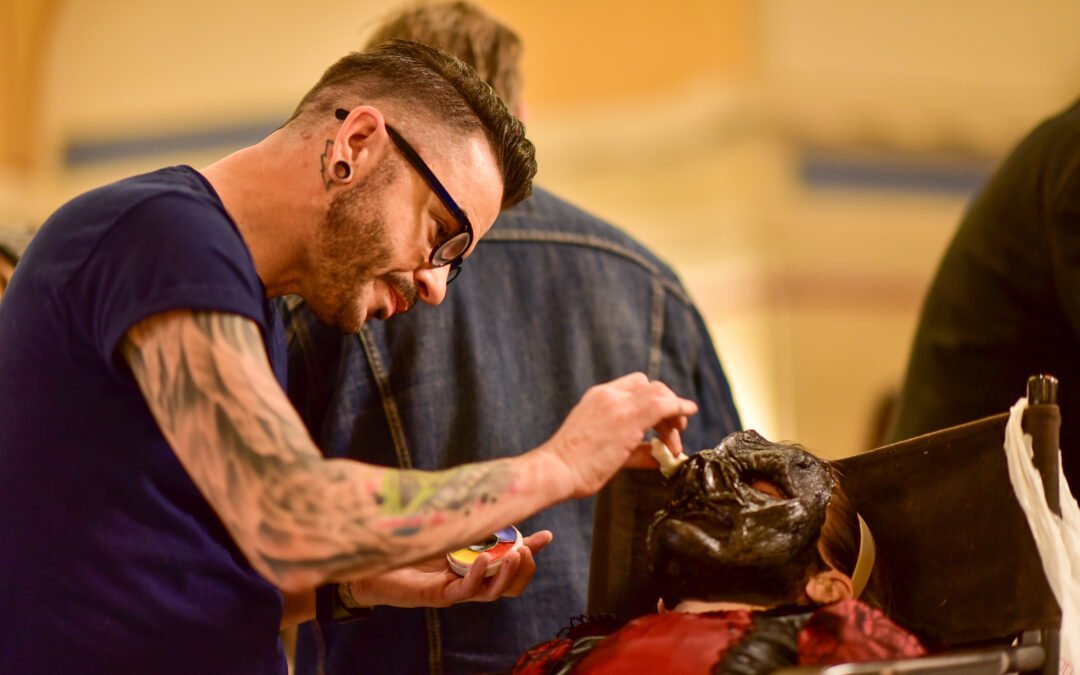Story & Main Photo
By Michael Kinney
When the film “Labyrinth” came out in movie theaters in 1986, Nathan Bright was nowhere to be found. The six-year-old, at the time, wasn’t one of those who stood in line to watch the Sci-Fi fantasy adventure with stars such as David Bowie and Jennifer Connelly.
Yet, no movie has seemingly left a bigger impression on the young Bright’s future than Labyrinth, which was directed by Muppet creator Jim Henson.

It was the first of many movies that Bright would go on to see that would indelibly make him want to get into the movie-making business. But not as a movie star or even director. What attracted Bright to films like “Nightmare on Elm Street” and “Dark Crystal” was the special effects.
“When I first saw “Labyrinth”, we had a VHS copy that somebody had recorded off of HBO,” Bright remembered. “At the beginning of the VHS copy, it was the end of a movie called “The Peanut Butter Solution”, which is a really weird one. And then it went into the old HBO jingle and then “Labyrinth” started. That’s how we watched that for years until I wore it out. But I remember that movie being almost vaguely terrifying. It was a creepy movie.”
“I don’t watch them anymore, but I love watching Nightmare Elm Street and stuff like that. And just the special effect aspect, like seeing a giant Freddy Kruger head swallow a girl or seeing a whole world made of puppets,” Bright said. “I always wanted to be part of that and help make those worlds.”
More than three decades later, Bright has lived the life of a movie Special Effects master. He’s worked on more than 50 films with huge and small stars, big-budget projects, and traveled the world doing what he loves.
However, now at the age of 44, Bright finds he is at a crossroads. The movie-making industry is changing as filmmakers move away from the hands-on special effects that Bright mastered and towards AI (Artificial Intelligence) and computer-generated effects.
“It’s been a lot of fun. Unfortunately, it’s not like it was back in the 70s, 80s and 90s when we were growing up,” Bright said. “Where I thought it would be this and it’s not anymore because technologically we’ve come so much further. It just doesn’t make sense to do things the way that we used to.”
Bright, who lives and works out of his home in Edmond, is part of a fading breed in Hollywood that isn’t necessarily ready to pack in it just yet. He thinks there is still a need for his brand of special effects and is doing his best to prove it.

“I can’t say that this is the dream job for everybody or this is this is the life I want,” Bright said. “I do love this life though. But you got to be made of something different to kind of stick with it.”
Bright didn’t officially get involved in creating special effects until he was in his early 30s. But instead of going to school to learn the trade, he set out to teach himself around 2010.
Three years later Bright found himself on the set of his first movie, “Army of Frankenstein.” Resume-wise, he was thoroughly underqualified for the project. Yet Bright still knew he could do the job.
“There was a Facebook post that I answered where they needed a special effects makeup artist, and I answered that and stepped in and took over the position for film,” Bright said. “I don’t remember how many awards we won for that one on special effects alone. It’s one of those things like almost everything in my life, because I’m a jack of all trades, but I’ve always taught myself if I want to know something, I’ll go and learn everything about it.”
Army of Frankenstein kicked off an 11-year career that amazes Bright. Along with creating special effects for fantasy and horror movies, he is also called upon to work with the military.

“I also go and help train the US military’s various branches in regards to helping train the medics for how to assess and address casualties during active combat,” Bright said. “It’s known as Moulage and so I get to help train Marines, army rangers, Navy, stuff like that. What they want is something that is as realistic as possible to kind of evoke that emotional response and then kind of dampen it so that we can make soldiers.”
However, as great as the journey has been for Bright, it has also not been totally what he expected. Even as he is in the process of trying to find funding for a film he has dreams of making, he sometimes wonders if it is all worth it.
“It’s a hard life. So we work on these movies and we’re not bringing home a ton of money. We live in small areas. I’m living better than half my friends that work on big-budget films,” Bright said. “It’s tough. And there are months when you’ll go without work. A lot of it you’ll be underpaid or won’t get paid at all. There are all kinds of stuff you deal with. You had better have an alternate source of income or two or three. I’ve got four.”
Bright was asked if he could go back to that 10-year-old who watched Labyrinth for the first time and tell him what his future would look like, would he make the same decisions. He said he wasn’t sure.
“The journey here has definitely been tough. So if I was to tell myself, ‘Look, this is what you got to go through to become the person you will be,’ I don’t know if I would take the journey, to be honest,” Bright said. “It’s been rough, but I’m happy with it nowadays. Like I said, it’s made me who I am. It’s led me to where I’m at, and I’m excited for now and the future.”
Instagram: mkinneymedia
X (Twitter): MKinneyMedia
Youtube: Michael Kinney Media
Photos (SmugMug): Michael Kinney

